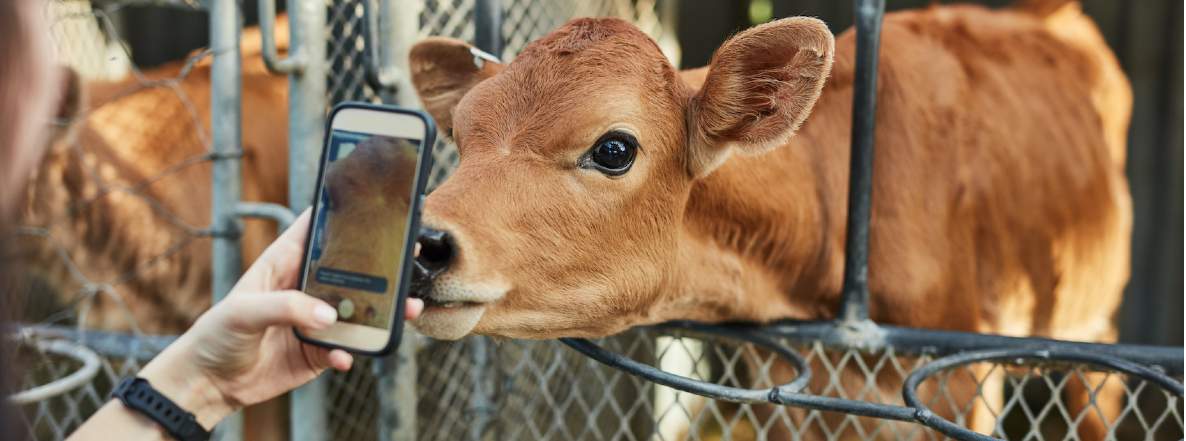Over half of the world now uses some form of social media and on average each person spends two and a half hours a day scrolling their screens (Statistica 2021). Whether these figures shock you or not, they signal a shift in the way that society engages and connects with the world.
Historically, farmers have been among the last people to jump on the self-publicising wagon. However, today the rural sector holds many of the solutions to the challenges society is confronting, from climate change to protecting nature, providing healthy food to increasing access to green space. So there are new reasons for farmers to engage with the public and the growth of social media means stories can be shared at the click of a button.
Not only is farming inherently Instagrammable (think photos of fluffy lambs), but more importantly, growing online communication is pivotal in reconnecting the urban based public with the countryside and brings with it many opportunities for the rural sector.
We have coined these rural social media celebrities 'farmfluencers' – the social media gurus who have unlocked the power of the online world to educate, collaborate and engage. Farmfluencers can have up to 50,000 followers, their own branding, books and genuine celebrity status.
We know that the world of social media can seem daunting, so we’ve teamed up with the Savills Social Media team to give you the essential beginner’s guide to becoming the next farmfluencer.
- Choose your platform carefully There are lots of different social media platforms out there and it’s important to make sure you’re using the right platform for the message you want to share:
◊ Instagram is all about sharing photos, videos and visual messages. It’s accessible and very popular, with over 1 billion users. Showcase your farming photography skills and you will quickly create an avid following.
◊ Twitter tends to be where opinions are voiced and discussion is started. An informational feed where it’s acceptable to debate all manner of topics, from animal fertility rates to the future of agricultural support.
◊ Facebook was one of the original social media platforms and it continues to grow. It is really useful when promoting local sales, events or initiatives. Community pages on Facebook can also be helpful when you want to tell everyone which field the angry bull is in.
◊ LinkedIn is for professional profiles, sharing interesting ideas and achievements. It's helpful for linking to other business professionals and those working within similar sectors.
- Think before you post Social media isn’t about posting all of your opinions all of the time. It’s important to think about the message you want to convey – why you are sharing it and what value are you adding.
- Find your voice Authenticity is key to engagement and finding your voice is important. It helps to remain consistent with your stance, but don’t be afraid to try new things.
- If in doubt, stay neutral In the world of social media, words are the same as actions. Unless you’re deliberately making a political statement, play it safe – reactions to posts can quickly become very negative and there’s reputational risk around every corner if you’re not careful.
- Hashtags are actually really helpful Hashtags are used in social media to indicate a theme or a topic, for example #britishfarming or #climatechange. They are used across all platforms and make it easier to search for thematic posts. Where possible use hashtags that are already popular or trending rather than trying to create new ones. Using hashtags will not only increase your reach but also reinforce the themes you are passionate about.
One thing for certain is that social media is here to stay and has a lot of power. The opportunities it presents for reaching new audiences and promoting the rural sector are endless. So create an account, learn from others and start posting.

.jpg)
.jpg)
.jpg)
.jpg)

.jpg)


.jpg)
.jpg)